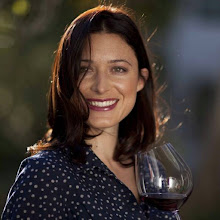May 12, 2011
Wine-amic Duos
Wine-amic Duos
A Cellargal* Wine Tasting
Inspired by the Pulitzer Prize Winning Novel
The Amazing Adventures of Kavalier & Clayby Michael Chabon

Inspired by the Pulitzer Prize Winning Novel
The Amazing Adventures of Kavalier & Clayby Michael Chabon

Joe Kavalier: Czech artist, upper-middle class, physically strong, educated, fighter...
Sam Clay: Brooklyn-born, working class, physically weak, self-made, conflicted, peacemaker...
Sam Clay: Brooklyn-born, working class, physically weak, self-made, conflicted, peacemaker...
Synergy, from the the Greek syn-ergos, meaning "working together," describes two or more things that function better together than apart at a given task or in a certain context. In the context of Chabon's novel, the protagonists Sam Clay and Joe Kavalier are able to acheive success as a result of their combined skills and efforts. The sum of the parts is greater than the whole...
In life, we experience synergy everywhere, from the workplace, where we may work as part of a team or our company may serve a function that supports a greater corporate whole, to our romantic life (after all, someone needs to be able to change the lighbulbs, put chains on tires, and take out the trash...) to the kitchen, where cooking is essentially our effort to allow the synergy that can exist between proteins, fats, vegetables, and starches yield something delicious to eat that is better than any one ingredient by itself. (Thankfully my husband completes me when it comes to matters in the kitchen).
In wine, synergy is also at play. While most wine-loving Americans are accustomed to single varietal wines (I'll have the Cab, please) and might suspect a blended wine to somehow be inferior to a single varietal, this is not the case in the classic old world winemaking regions of Europe. In the French regions of Champagne, Bordeaux, and the Rhone, blending traditions have evolved out of centuries of vintners figuring out what works best given the context of climate, soil type, and local culture.
By producing wines that are blends of different varietals, vintners are able to let the strengths of one varietal (say, structure and tannins) be balanced out by the strengths of another (say, suppleness and aromatics). If vinified separately, these varietal wines might be undrinkable. Blend them together, and you get the best of both.
The Great Wine-Amic Duos of France:
1. Pinot Noir & Chardonnay
Tradition in: Champagne
Why? Pinot provides structure and depth of fruit in the blend; Chardonnay adds weight, richness, and body for ageing.
Leclerc Briant Reserve Brut Champagne
70% Pinot Noir /30% Chardonnay
2. Sauvignon Blanc & Semillon
Tradition in: Bordeaux
Why? Semillon tends to fatness and has little aroma when young; Sauvignon Blanc is highly aromatic and high in acid but lacks substance.
2008 Bonnet, Entre-Deux-Mers Blanc50%, Sauvignon Blanc, 40%, Sémillon, [+10% Muscadelle]
3. Syrah & Viogner
Tradition in: Northern Rhone/Cote Rotie
Why? Syrah can be very dark and brooding when young; Viognier adds floral aromatics, enhances the texture and viscosity to the wine, and deepens and stabilizes color.
2007 J. Boutin "Bonnevaux" Côte-Rôtie (Stéphane Vedeau)
88% Syrah and 12% Viognier; cofermented. (Cofermentation= the simultaneous fermentation of two or more varieties in the same vessel.)
4. Cabernet Sauvignon & Merlot
Tradition in: Bordeaux
Why? Cabernet Sauvignon has great potential for structure and to be a vehicle of expressing vintage and terrior attributes but can be difficult to ripen and is very tannic when young. Merlot is ripens early and yields plump, lush fruit; it softens and Cabs edges and adds fruitiness to the wine in youth.
2006 Domaine de Chevalier Rouge, Pessac-Léognan63% Cabernet Sauvignon, 30% Merlot [and the rest Petit Verdot and Cabernet Franc]
**
"When men drink, then they are rich and successful and win lawsuits and are happy and help their friends. Quickly, bring me a beaker of wine, so that I may wet my mind and say something clever."
-Aristophanes c. 450 - 385 B.Knights [424 B.C.], l. 92

No comments:
Post a Comment